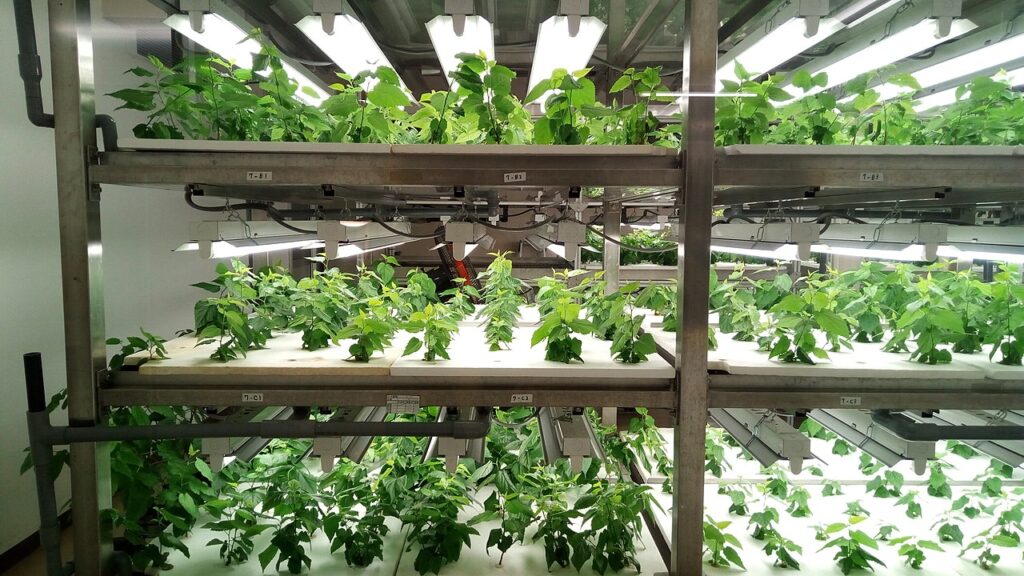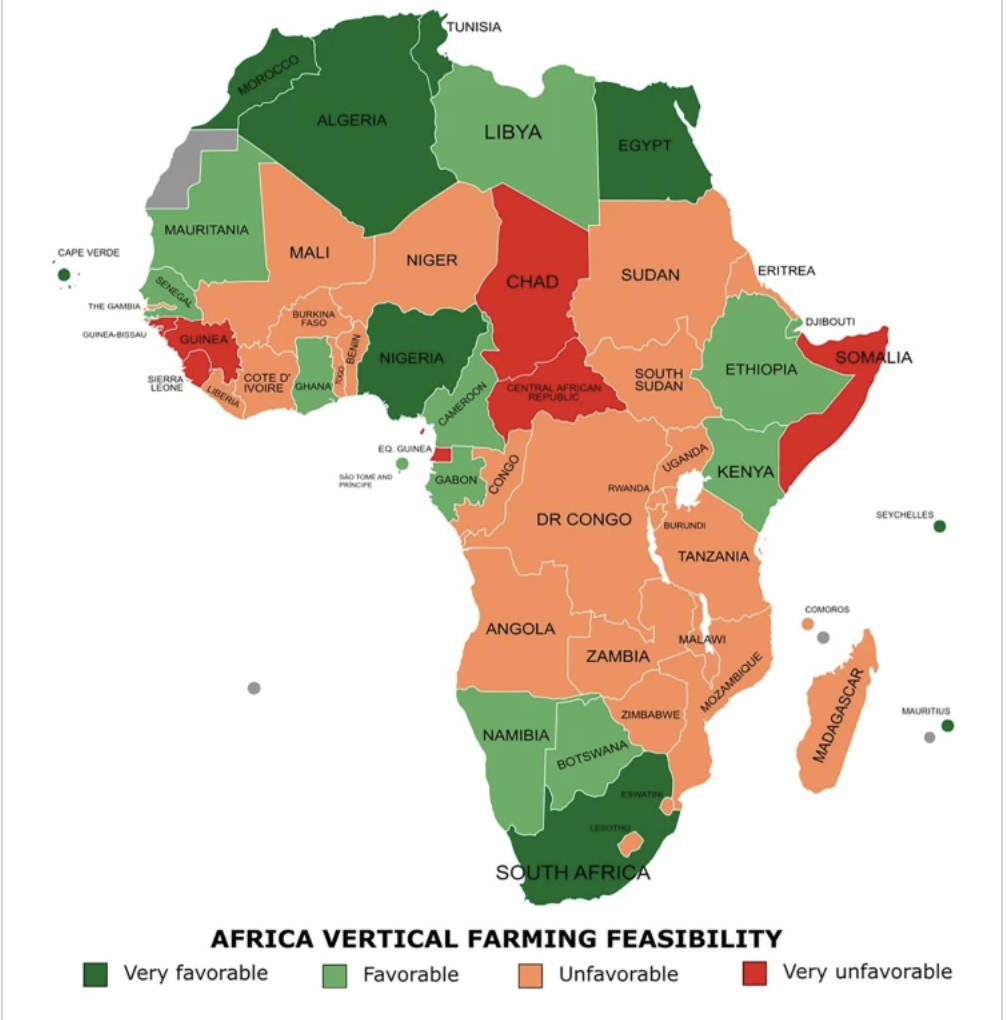
A new paper has identified nine African countries most suitable for indoor vertical farming, a climate-resilient and resource-efficient method of boosting food production.
The study published in the journal ‘Nature’ found South Africa, Seychelles, Mauritius, Cape Verde, Egypt, Morocco, Tunisia, Algeria and Nigeria to be “very favorable” for vertical farms.
These farms use stacked shelves, artificial lighting and soilless cultivation to deliver food all year round. They can consume up to 95% less water, and produce 100 times more per square foot of land than traditional farms. They employ no or reduced pesticides and chemicals. They can be built within or next to cities, delivering fresh and local food with less negative environmental impacts.

This ranking is based on an assessment of the major opportunities and challenges of implementing vertical farms. These included climate change vulnerability, urban development, private sector, infrastructure, science and technology, energy and water.
“With financial and technological support from governments and the private sector attraction to city dwellers and companies, the uptake of indoor vertical farms in Africa can be achieved,” concluded the study published by researchers from the University of Bologna and Foundation Eni Enrico Mattei in Italy.
Most countries from West, Central, and East Africa subregions were classified as “unfavorable” or “very unfavorable” for vertical farms. Sierra Leone, Somalia, and the Central African Republic showed the lowest scores.
“The least feasible countries can opt for modular and low-cost innovative solutions of vertical farming systems which can offer new opportunities for young or small-scale growers without being dependent on the high investments typical of high tech indoor vertical farms,” recommended the study.
To be feasible, indoor vertical farming requires greater investments in infrastructure, technologies and operational systems. It also needs reliable energy and water and expertise, among other demands.
Africa’s food systems face growing pressure from climate change and other challenges amid the urgent need to sustainably feed a projected 9.7 billion by 2050. The continent is also expected to have more people living in cities by 2050 than Europe, Latin America, or North America, resulting in high demand for food in urban areas. Currently, the continent is heavily dependent on imports of major staples, making it vulnerable to supply shocks.
Im more than happy to find this page. I need to to thank you for your time due to this fantastic read!! I definitely appreciated every bit of it and I have you bookmarked to see new information on your site.
May I simply just say what a relief to find somebody who truly knows what theyre talking about online. You actually understand how to bring a problem to light and make it important. More people ought to look at this and understand this side of the story. I was surprised that youre not more popular because you certainly possess the gift.
Very good post. I absolutely appreciate this site. Thanks!